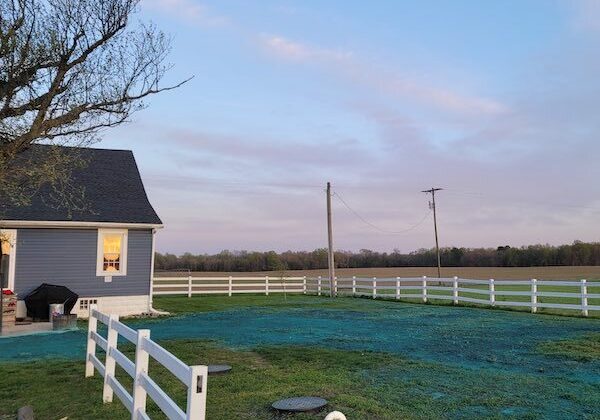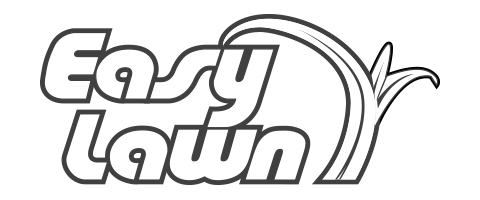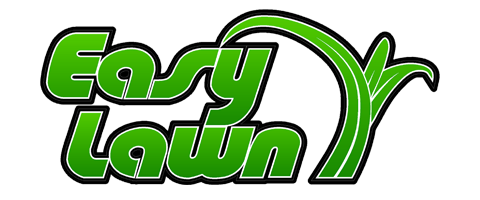Is Hydroseeding Worth the Cost?

Share this article!
Most industry professionals will be familiar with hydroseeding, or hydromulching, which is the method of planting grass or other plants using a slurry of water, seed, fertilizer, and mulch. Because hydroseeding covers a large area relatively quickly and generally produces high-quality results, it can be an effective and efficient way to establish vegetation.
With benefits like these, it’s easy to wonder: is hydroseeding worth the cost? And the answer to that often varies by situation.
Pros of Hydroseeding
As we’ve said, hydroseeding can provide numerous benefits for small and mid-size landscapers. In addition to being quick and efficient, hydroseeding has the added benefit of being effective over a variety of soil and terrain types. Because hydroseeding machines can broadcast seeds over long distances, hydroseeding makes it easy to establish vegetation in otherwise hard-to-reach areas. This lends hydroseeding incredible flexibility which can be applied in a variety of industries from agriculture and erosion control to landscaping, landfills, and commercial projects like highways or airports.
Additional benefits of hydroseeding:
- Quick results: Hydroseeding establishes vegetation quickly, so for projects that have tight timelines, seeding this way can provide much faster results than traditional seeding methods.
- Improved germination: In addition to being quick to germinate, hydroseeding often produces much higher quality results than other methods of seeding because seeds are spread evenly and in combination with mulch and fertilizer, so the end result is healthy, uniform, and consistent grass or vegetation because the seeds enter the environment with everything they need to thrive..
- Erosion control: Because hydroseeding can be used to establish vegetation on slopes and other erosion-prone areas, it can help stabilize the soil and prevent runoff.
- Cost-effective: In some cases, hydroseeding may be more cost-effective than traditional methods of planting grass, especially if you are planting on a large area or have difficult soil conditions.
Cons of Hydroseeding
While hydroseeding can be quick and effective, it doesn’t always mean it’s the right method for every job or situation. And while it can be appealing to think of it as a one-size-fits-all solution for landscaping needs, that’s not always the case. There are several situations where hydroseeding may produce less than ideal results, including:
- Dry or arid conditions: Hydroseeding typically requires a lot of moisture to establish well, so if the soil is too dry, seeds may have difficulty germinating, germinate sporadically, or die entirely — leading to patchy, inconsistent results.
- Poor soil quality: If soil doesn’t allow water to drain, creating pooling, this can drown and wash seeds away before germination can take place. Additionally, if soil lacks important nutrients, no amount of hydroseeding will be effective.
- Extremely steep slopes: While hydroseeding can be used on otherwise difficult terrain like slopes, there are some slopes that may prove too difficult, even for hydroseeding. In most situations, hydroseeding can be used to slow and prevent runoff, but if the terrain is too steep, the slurry could potentially wash away before it can take root.
- Heavy foot traffic: Hydroseeded areas need to be left alone for the first 3-5 weeks as the seeds work to germinate. As a result, hydroseeding may not be able to withstand heavy foot traffic until the grass or vegetation has fully established itself, so it may not be a good choice for areas that can’t be restricted from foot traffic for about 5 weeks.
- Pests or diseases: If the area is prone to pests or diseases that can harm newly-established grass, hydroseeding may not be a good choice.
Is Hydroseeding Expensive? The Actual Cost of Hydroseeding
In general, hydroseeding can be more expensive than traditional seeding methods like hand seeding or using a mechanical seed broadcaster. However, the cost of hydroseeding greatly depends on a few key factors:
- Project size – How big is the area in question? Sometimes smaller hydroseed jobs can be more cost-effective because fewer materials are used.
- Materials – The types of seed and fertilizers used also impact the cost of hydroseeding, cheaper varieties of seed, for example, can reduce the overall cost of a project. More specialized seed varieties or seed mixes, or specialized fertilizers can increase the cost.
- Labor – With the exception of DIY hydroseeding jobs, the price to have a landscaping contractor hydroseed generally varies by region and season.
- Equipment – Hydroseeders themselves either need to be purchased or rented, and determining which can help you control and plan for the costs.
- Location – The cost of hydroseeding may be higher in certain parts of the country due to both differences in labor and material costs.
For these reasons, it’s difficult to provide a fully accurate cost for hydroseeding. However, on average, you can expect hydroseeding costs to run from $0.06 to $0.20 per square foot. For an average sized lawn of around 5,000 square feet, the total would be around $1,000.
Alternatives to Hydroseeding
Laying Sod
Laying sod is a quick way to start establishing a lawn in a short amount of time. Sod involves installing rolls or squares of pre-grown grass that are laid on top of the soil. Sod must then be watered and cared for until the roots take hold and the sod fully establishes.
Sod’s major advantages are that it provides you with the appearance of a fresh lawn very quickly compared to other methods. However, once the sod is installed, even though it looks just like a lawn, it’s not yet ready to function like one. Sod requires a period of time – typically 2-3 weeks – without foot traffic to establish well.
Sod is also typically the most expensive of the choices because you get the appearance of a fully-established lawn in very short order. Sod is also good for areas where you can count on conditions being hospitable for the grass variety you’ve chosen. If you have an area that’s a little more unpredictable, hydroseeding may offer a better result, since you can mix seed species to help ensure a lush, healthy-looking result even if the climate fluctuates.
Hand Seeding
Hand seeding is hands down the most cost effective of the options. Because seed is hand applied, it’s generally a great choice for smaller areas that require a more precise application. Ideal for small gardens with intricate designs or smaller yards that require specific areas of grass, hand seeding can help in tight or difficult spaces.
When it comes to larger areas, however, hand sown grass becomes a much more daunting process, and can become very time consuming and labor-intensive, very quickly. Especially in large areas, hand seeding methods tend to be less effective, and produce a lesser quality lawn because the broadcast method isn’t as consistent, and the seeds have a greater tendency to shift around after application. Hydroseeding avoids this issue because the slurry includes tackifiers and mulch which help keep the seeds in place, helping ensure a more consistent, healthy-looking lawn.
Takeaway: Is Hydroseeding Worth It?
Overall, determining whether or not hydroseeding is worth the cost will depend on your specific circumstances and needs. For example, if you have a large area that needs to be seeded, hydroseeding may be a good option because it can cover the area efficiently and result in a thick, healthy lawn. If you have a smaller area or are working with a limited budget, hand seeding or laying sod may be more cost-effective options.
Similarly, it’s important to weigh the pros and cons against your budget and preferences. If you have a small or intricate area to seed, and you need a specific variety of grass seed, then hand seeding may be the right choice. On the other hand, if you need to stabilize a slope or use a combination of seeds to ensure growth in unpredictable soil conditions, hydroseeding can be well worth the investment. Acquainting yourself with the different models of hydroseeders available, and their capacity and application can also help determine the choices for your particular budget. Compact hydroseeders can be relatively inexpensive entry points for hydroseeding businesses, and if you’ll need larger capacity tanks, a hydroseed trailer may the right fit. You can also use a hydroseeding coverage calculator to help price out material costs to help you get a better idea of the total expense.
Still asking yourself: is hydroseeding worth it? It’s always smart to ask for a professional opinion, and get a few quotes to help you make the best decision for your project.

